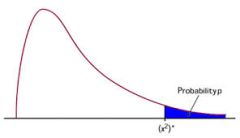Exponential Probability Calculator
Instructions: Compute exponential distribution probabilities using the form below. Please type the population mean \((\beta)\), and provide details about the event for which you want to compute the probability for. Notice that typically, the parameter of an exponential distribution is given as \(\lambda\), which corresponds to \(\lambda = \frac{1}{\beta}\)
How to Use This Exponential Distribution Calculator
More about the exponential distribution probability so you can better understand this probability calculator: The exponential distribution is a type of continuous probability distribution that can take random values on the the interval \([0, +\infty)\) (this is, all the non-negative real numbers). The main properties of the exponential distribution are:
- It is continuous (and hence, the probability of any singleton even is zero)
- It is skewed right
- It is determined by one parameter: the population mean
- The population mean and the population variance are equal
Using the above exponential distribution curve calculator , you will be able to compute probabilities of the form \(\Pr(a \le X \le b)\), with its respective exponential distribution graphs . This not exactly a exponential probability density calculator, but it is a cumulative exponential normal distribution calculator. Type the parameters for a and b to graph the exponential distribution based on what your need to compute. If you need to compute \(\Pr(3\le X \le 4)\), you will type "3" and "4" in the corresponding boxes of the script.




